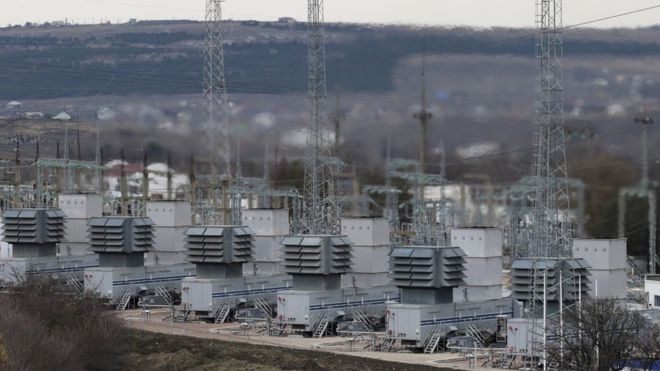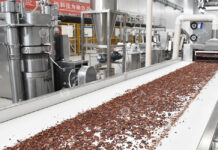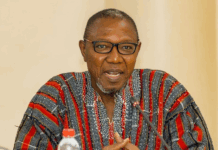
…As water level in Akosombo Dam appreciates
By Ernest KISSIEDU
Authorities at the Volta River Authority (VRA) have indicated that water level in the hydro plant at the Akosombo Dam has started appreciating due to heavy downpour in this rainy season.
The water level was 240.42 feet (73.280 metres) as of Friday June 30, 2017, meaning the level is about five feet more than it was at this same time last year – 235.50 feet (71.780 metres) as at Thursday, June 30, 2016.
While the act of God helps in appreciating the water level in the dam, the VRA intends to shore up its efforts by, at least, doubling the capacity of its Kpone Thermal Power Plant (KTPP). The KTPP has an installed capacity of 220MW and a dependable capacity of 200MW.
It is estimated that at least 153 million euros (GHC766.5m) might be needed for the expansion works for the plant, which currently uses gas and distilled fuel oil (DFO) for its generation.
Business Day Ghana gathered these facts when our reporter joined a group of media practitioners to visit the Akosombo power generating station last Thursday to access the plans and activities the Authority is undertaking to ensure sustainable and reliable power supply in the country.
Akosombo dam
The effect of rising water level in the Akosombo dam is that 353 megawatts (MW) of power is currently being produced at the hydro plant. The plant has installed and dependable capacities of 1,020MW and 900MW respectively.
According to the Director of Akosombo Hydro Generation Station, Ing. Richard Oppong-Mensah, the VRA has minimized the level of generation at the dam to allow water levels to appreciate as the rain has started.
“We prefer running the thermal plant than the hydro plant, especially when the water level is very low. If you don’t manage the dam well, you destroy the turbines. When it goes low, the effect becomes severe,” he noted.
Ing. Oppong-Mensah believed that the water levels in the Akosombo have started to increase and, “we are expecting more increase as the rain is at its peak especially from now till November. Actual rainfall will be in November.”
He explained that though the use of renewable energy is not that cheap, many people are now resorting to solar panels to reduce the high demand of energy on the national grid.
“Thermal runs on fuel whiles hydro runs on water. We have different sources of fuel to run our thermal plants. They are using heavy fuel other than gas,” Ing. Oppong-Mensah said.
When the team visited the Kpone Thermal Power Station, the Plant Manager, Ing. Darlington A. Ahuble, announced that a steam add-on is expected to be constructed as phase two of the project.
“With the steam project, we have done all the necessary feasibility studies and the expansion might cost 153 million euros (GHC766.5m), if not more. But we have not awarded the contract to anyone yet. Currently, we have an efficiency of 33% but with the steam add-ons, we should be doing 50 to 53%. This will help the unit cost of electricity to be lowered,” he asserted.
According to Ing. Ahuble, currently, the power station is not producing any electricity because Machine 1 is on maintenance and the second one is not running because there are no demands for now. Both machines can produce 110 megawatts each.
The Authority operates a total installed electricity generation capacity of 2,434 MW. This is made up of two hydroelectric plants on the Volta River, with installed capacities of 1,020 MW and 160 MW at the Akosombo and Kpong Generating Stations respectively, and are complemented by a 330 MW Combined Cycle Thermal Plant at Aboadze, near Takoradi.
A further 330 MW Combined Cycle Thermal Plant, Takoradi International Company (TICO) is owned as a joint venture with TAQA, from Abu Dhabi in the United Arab Emirates. An additional development of 132 MW (T3) Magellan plant at the same site at Aboadze was commissioned in 2012.
The VRA has also developed a number of plants in Tema. These include an 110MW Tema Thermal 1 Power Plant, an 80MW Mines Reserve Plant, both commissioned in 2008. A 50MW Tema Thermal 2 Power Plant commissioned in 2010; and additional development of a 220MW Thermal Plant located at Kpone, near Tema.
The Authority is also planning additional development of 100-150 MW of wind power, commenced in 2012 at locations in the southern part of the country where conditions are favourable – and up to 12MW of solar power generation in the next three years in the northern part of the country, where the resource is abundant – beginning with the construction of the first 2MW solar plant, commissioned in 2012.
Energy sector financing
The VRA’s announcement on the intention to construct phase two of the KTPP comes as government has appointed two leading banks to lead a bond aimed at financing debts in the energy sector.
In April, Vice President Dr. Mahamudu Bawumia told Accra-based Citi FM that there was a 2.4 billion dollar debt hanging over the neck of state owned enterprises. ‘What we are going to do is to issue a 15 year long term bond to deal with this debt,’ he reportedly stated.
Two months later, in June, the state-owned wire agency, Ghana News Agency, reported that government had appointed Fidelity Bank and Standard Chartered Bank as joint lead Managers for the issuance of an Energy Sector Levy Act (ESLA) backed Bond to the tune of about GHC10 billion.
The amount is the total estimated legacy debt within the energy sector, the GNA wrote.
























